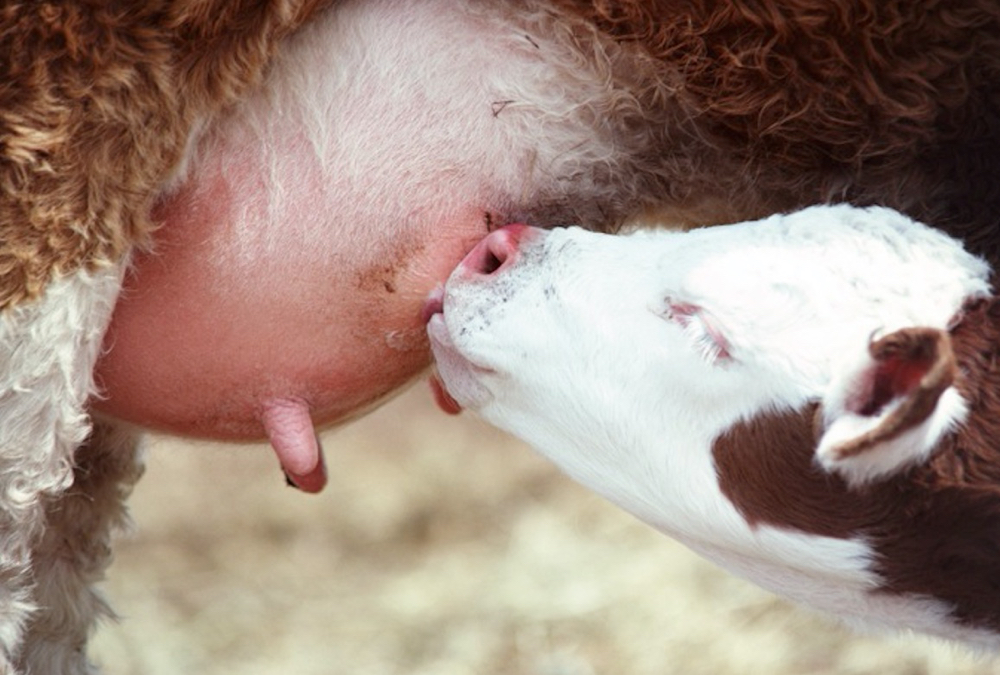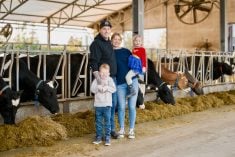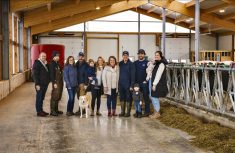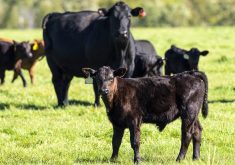Glacier FarmMedia – North American dairy production is reducing its impact on the climate while maximizing production through genetics, technology and data-driven decisions.
That’s the conclusion of a recent report, ‘The Environmental Benefits of Modern Dairy, Hay, and Forage Production Technologies’, which was unveiled at the World Dairy Expo in Madison, Wisconsin, during an industry expert panel discussion last month.
Why it matters: The North American dairy industry has reduced its environmental footprint while increasing production in the last 15 years, a study indicates.
Read Also

Veterinary know-how on the farm
If you’re a livestock farmer, you’ve likely faced one of the most frustrating situations on the farm: a sick or…
Data were included from American and Canadian dairy sources. Both Canadian and American dairy industries have committed to achieving net-zero in production of greenhouse gases by 2050.
[RELATED] 2030 Canadian Beef Goals highlight carbon emissions
“The study highlights how policies and technological advancements can help farmers increase outcomes.”
Commissioned by the Association of Equipment Manufacturers (AEM), the National Milk Producers Federation and Dairy Farmers of America, the study aimed to quantify the benefits of modern dairy technologies and how they have affected consumers, dairy farmers and cows over the past 15 years.
“We are living in a new age of agriculture, and today’s modern dairy, hay and forage production technologies have an enormous positive impact on dairy farmers, cows, consumers and the environment,” said Curt Blades, AEM senior vice-president of industry sectors and product leadership.
“One of our goals at AEM is to encourage the adoption of these technologies by more farmers, so they can all reap the benefits as we continue to focus on sustainability.”
The study said dairy industry improvements since 2007 have decreased greenhouse gas (GHG) emissions by 17 per cent, the equivalent of taking four million cars off the road. It also increased yearly water savings by 10 per cent, enough to supply New York City for two years.
[RELATED] Canada launches offset credits to help tackle emissions
In addition, genetics and technological advances in feed formulation and delivery resulted in a 15 per cent reduction in feed per cow and a 19 per cent milk yield increase.
The North American dairy herd has been reduced by 930,000 cows but the industry has maintained milk production through better genetics to improve longevity, disease resistance, feed utilization and milking ability.
“With only four per cent of the world’s cows, North America produces approximately 15 per cent of all the milk worldwide,” said Chad Huyser, Lely North America president. “These improvements are the result of genetics, technology, farm management practices and other innovations that benefit cow, dairy farmer, environment and society.”
Huyser said North America outpaced milk productivity levels in the rest of the world between 1960 and 2022 by approximately four times the global average.
Over the last 17 years, the dairy industry has seen an increase in larger-scale dairies. The average herd size has doubled, allowing producers to weather economic challenges and reduce the land required per pound of milk produced by 26 per cent.
“Dairy farmers are going above and beyond to provide milk that is responsibly produced,” said Matt Daley, GEA Farm Technologies president for North America.
“Ninety-nine percent of all U.S. milk comes from dairies participating in the FARM (Farmers Assuring Responsible Management) program, ensuring 360-degree responsible stewardship of dairies and milk production.”
The study did not quantify the connection between feed quality or nutrient uptake with yield increases and feed use or how cow comfort and technological advances relate to higher milk production.
“If the industry continues with its current trend of resource efficiency, in 2030, milk will potentially increase by 11 per cent as compared to 2021,” said Fabian Bernal, DeLaval’s global head of sustainability.
[RELATED] CUSMA compensation set for supply-managed sectors
“But this hinges on the sustained innovation that has led to where the industry is today, including continued technology adoption, integration of artificial intelligence, continued improvement in genetics, precision irrigation adoption, among other innovations.”
The expo’s dairy tech spotlight showed continued investment in on-farm artificial intelligence integration, tracking and traceability, and feed formulation for increased efficiencies, but there are barriers to adoption.
The study suggested government policies that reward innovation and programs that improve access to capital, along with improved wireless infrastructure, could improve uptake.
It also said better communication with consumers could build trust in the industry and the science behind milk production and animal welfare. That, in turn, would preserve a healthy market for milk products.
Successful adoption of new technologies could lead to a three per cent increase in milk yields, reduce GHG emissions by eight per cent and reduce feed, land and water use by six, four and three per cent, respectively, by 2030, according to the study.
– This article was originally published at Farmtario.















